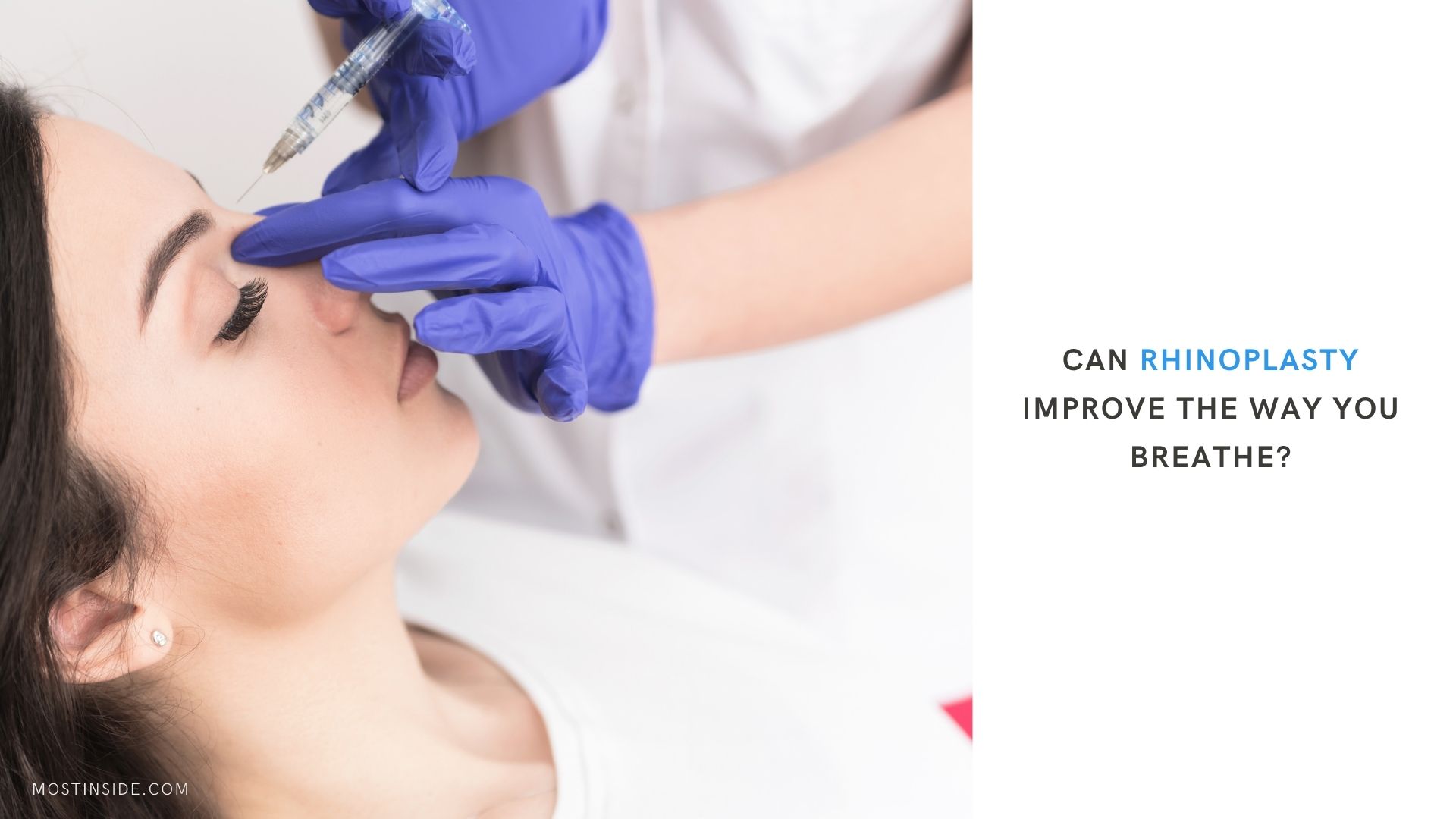Can Rhinoplasty Improve the Way You Breathe?

Some people believe that the most suitable for rhinoplasty are those who are not happy with the appearance of their noses and require surgical procedures to insert symmetry, fix some defects or remove a bump in the nose bridge. While it is cosmetic surgery, there exist functional reasons for rhinoplasty procedures. Asymmetric nose interferes with breathing. Asymmetry of the nose may also impart low self-esteem on individuals because of the appearance of the nose.
With a functional obstruction of the airways, you are likely to experience nasal congestion. Besides, you will struggle to breathe through the mouth, experience mouth dryness and a diminished sense of smell.
With an obstructed airway, you are also likely to experience headaches, sinus infections, and nosebleeds. Headaches result from elevated sinus pressure.
These symptoms directly influence how you sleep, predisposing one to chronic conditions such as hypertension, obstructive sleep apnea, and heart disease. Repairing a deviated septum is an example of functional rhinoplasty. It is the septum that divides the right and the left nasal passages. If it gets twisted or bent, the bone may block air in the air passages.
Indications for Rhinoplasty
People seek rhinoplasty for various reasons, including the desire to correct congenital malformation, correct breathing, and nose repair after injury. When visiting the surgeon for rhinoplasty, you can expect the following changes:
- Nostrils narrowing
- Reshaping the tip
- Bridge straightening
- Changing the size of the nose
If the rhinoplasty aims to improve your appearance and not correct an underlying health condition, it is advisable to wait until the nasal bone is fully developed. For females, it is about 15 years, while in men, the development takes longer. However, if it aims at correcting an obstruction in breathing, it can be done in the early ages.
Rhinoplasty Risks
There are common risks associated with surgeries, and rhinoplasty is not exempted. The common adverse effects include a reaction to anesthesia, bleeding, and an infection. After rhinoplasty, a patient may develop scars, more asymmetry if it wasn’t successful, nosebleeds, breathing difficulties, and a numb nose.
If you are unsatisfied with the procedure and need a second surgery, it is advisable to wait until your nose heals fully. The duration may last up to one year.
Preparation for Rhinoplasty
It is advisable to meet your surgeons to assess if you are fit to undergo the surgical procedure. With the surgeon, you will discuss why you need it and your aims. The physician will inquire about your medical history, current conditions, and medications in the process. Patients with a history of hemophilia are unsuitable for any elective surgical procedure.
The surgeon will also carry out physical examinations to determine the possibility of making any changes. They may also order some blood tests. It is advisable to avoid aspirin at least two weeks before the procedure because they possess anti-clotting properties and may delay healing by increasing bleeding.

Rhinoplasty Procedure
The procedure can be carried out in an outpatient surgical facility, surgeon’s office, or hospital. To cause a reversible loss of sensation, the physician may opt for either general or local anesthesia. Local anesthesia is the most suitable for simple procedures. It will numb both the nose and facial region.
With local anesthesia, you will still maintain consciousness. For children, general anesthesia is the most suitable, and it is inhalable or administered intravenously. Once you become unconscious or numb, the surgeon will make cuts inside the nostrils. They will separate the skin from the bone or cartilage then begin reshaping.
If additional cartilage is required for the nose, the surgeon may import some from deep inside the nose or ear. If more is needed, a bone graft or implant may be necessary. Usually, the surgery lasts for about one to two hours. However, a complex one may take longer.
Recovering from Rhinoplasty
After the procedure, the surgeon will place either a metal or plastic splint on the patient’s nose. The splint helps the nose retains its new shape as it heals. Splints or nasal packs may also be placed within the nostrils to stabilize the septum. The surgeon will monitor you after the procedure for some hours before letting you go if everything is fine.
In minimizing swelling and bleeding, it is advisable to rest with your head raised above the chest. You are expected to leave the dressings and splints in place for about a week post-surgery. Medications used in rhinoplasty may be associated with the slow reaction, impaired judgment, and memory relapse.
The surgeon may also advise you to have drip pads for absorbing mucus and blood common after surgery. Your surgeon may recommend that you avoid the following activities for the first few weeks after surgery.
- Vigorous brushing of the tooth
- Excessive chewing
- Blowing the nose
- Swimming
- Strenuous exercises such as running
Avoid too much exposure to the sun because it may cause discoloration of the skin around the nose. After a successful surgical procedure, you should be able to resume your normal operations after a week.
In some instances, the discoloration, swelling, or temporary numbness around the eye may persist for weeks. The slight swelling may even last for over six months. To alleviate the swelling and discoloration, you can apply ice packs or cold compresses.
Most patients get surprised at the effectiveness of rhinoplasty in correcting or restoring breathing challenges. A study was carried out at Illinois University to assess the efficacy of rhinoplasty in assisting patients to breathe. 98% of the participants testified that they experienced improved nasal breathing.
The patients were surprised that the procedure could correct the breathing challenges. They testified that the asymmetric nose was associated with breathing problems that disrupted their sleep at night. The breathing problems get worse with the increasing age. After rhinoplasty, the patients had a good sleep.
Consider rhinoplasty in Minneapolis. You will be amazed at the great work of professional surgeons. It is done in such a manner that no one can realize. The surgery has provided functional and cosmetic relief for thousands.
Recommended For You
What To Look For In A Cosmetic Dentist
Most Inside
Most Inside offers high-quality recommendations and valuable updates to enhance all aspects of your life, providing premium guidance and enriching experiences.




